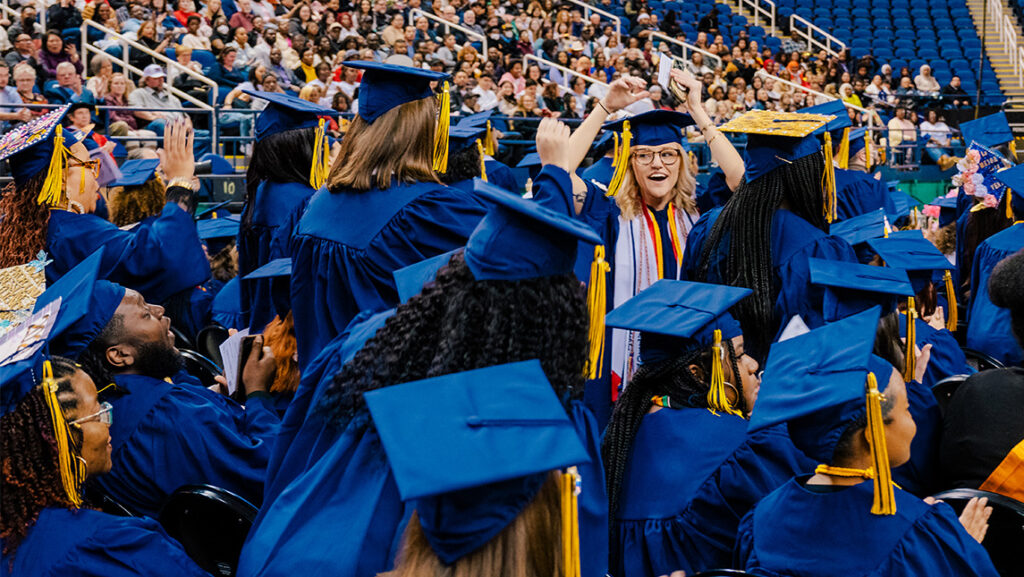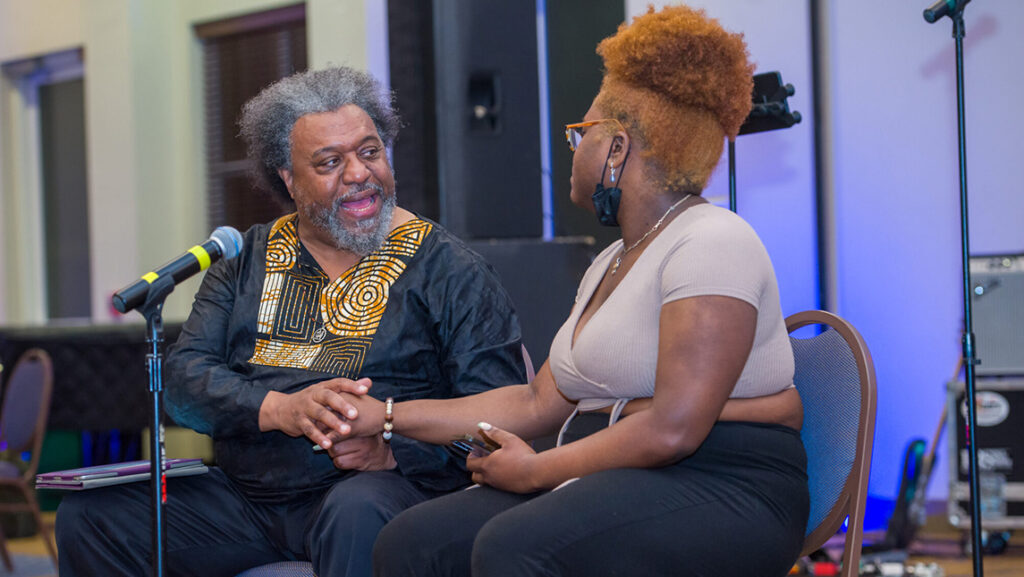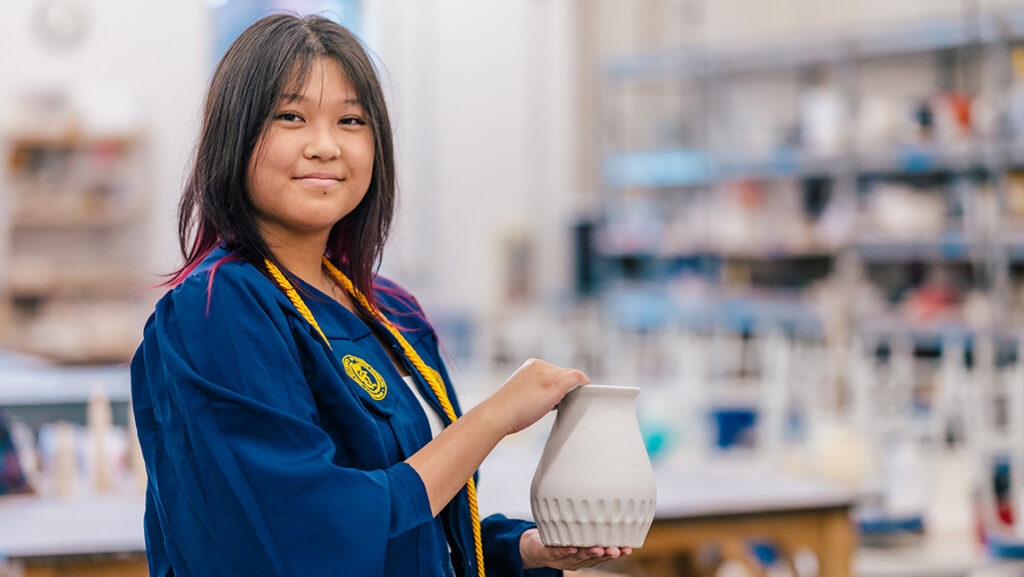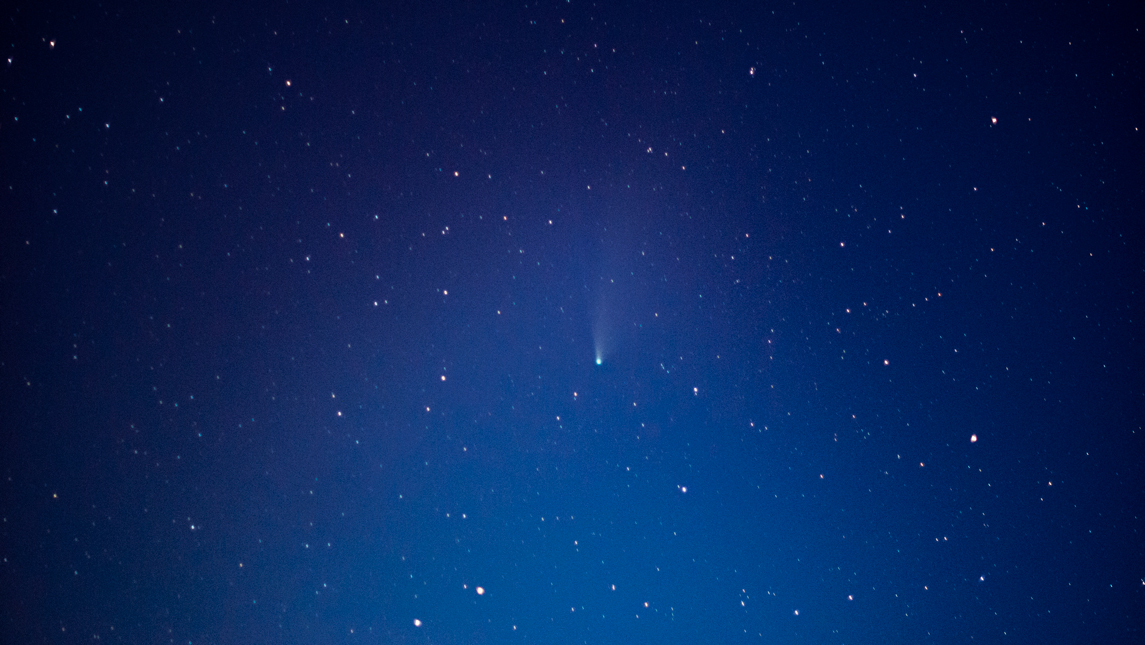
Comet NEOWISE, or C/2020 F3 was spotted by astronomers in late March on its 6,000-year loop around the solar system. It has made an impressive appearance across the Northern Hemisphere and some have called it the best comet performance since 1997’s Hale-Bopp show.
The Campus Weekly staff caught up with UNC Greensboro Physics and Astronomy faculty to hear how they’ve been observing the comet.
Assistant Professor Alicia Aarnio, new to UNCG last year, studies solar and stellar magnetic fields and how magnetic fields facilitate the flux of mass and energy within a star-disk system. Aarnio uses large data sets and the solar-stellar connection to understand stars like the Sun when it was a few million years old and how it evolved to be the star we know now.
About the event of the comet she says, “It’s not of specific research interest to us, but it’s fun to get excited about rare things happening in the sky!”
Dr. Aarnio’s photos are featured above and below, as well as her dispatches from viewing Comet NEOWISE over a few evenings during the past week.
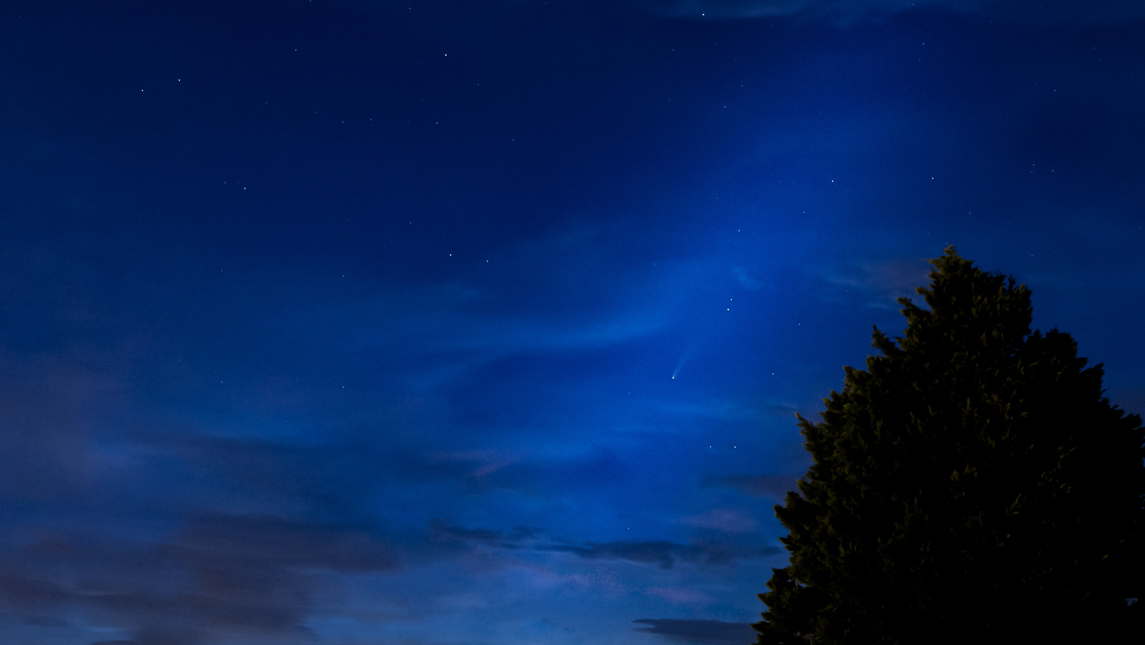
July 20
“I just went out tonight (er, it’s 1 a.m., so I mean last night, Sunday) and got my first glimpse. It’s setting at the beginning of the night and really hard to spot naked-eye, the comet is getting fainter the farther it gets from the Sun, and that faintness is competing with the sunset since it’s to the north-northwest. I used a digital single-lens reflex camera, and its widest field of view first, and once I saw it on the camera preview screen, I could spot it naked-eye.
I’m not an astrophotographer by any means, but I do have some decent, in-focus pictures I’m asking my brother (a professional photographer) to help me dial in/remove power lines. I went to a trailhead near Lake Brandt; tall trees are a huge problem, I couldn’t get anywhere within walking distance of my house where trees didn’t block my view. It was really nice how many people were there with the same idea and enjoying the comet together from appropriate distances, I wasn’t expecting that.
So far, the comet has been too low to point the Three College Observatory telescope at; we have trees around the observatory to deal with, and the telescope’s mirror isn’t actually affixed to the housing. This is a feature, not a bug; gravity does the work of holding the mirror to the base of the telescope, but if we point too low, the mirror could wobble and shift out of alignment.
The forecast isn’t promising for the upcoming week, but I’m planning to keep an eye on things and potentially drive to a dark sky site if it’s possible to get more photos with my DSLR. I know Dr. Anatoly (and Dr. Steve Danford, emeritus professor of astronomy) are interested in getting a spectrum of the comet if possible.”
July 26
“I’ve attached a couple of images, one that I took tonight and the other is one I took last week that my brother very artistically processed. In one of them you can see both tails!
I couldn’t spot it naked-eye tonight, only using the camera. The Delta Aquarid meteor shower is happening now; definitely saw a few of them while we were out tonight!
Monday night might be the last call for a decent view – the moon is waxing toward full and it’s close to the comet in the sky, making it harder to see.”
Because of cloudy weather for the rest of the week, Dr. Aarnio recommends tonight, Monday, as a last chance to see the comet.
Dr. Anatoly Miroshnichenko recommends understanding NEOWISE’s position through this website.
Photography by Dr. Alicia Aarnio
Compiled by Susan Kirby-Smith, University Communications
